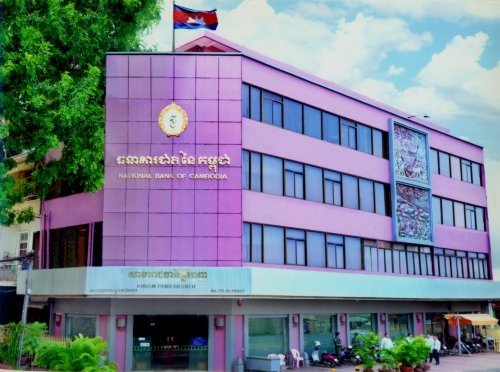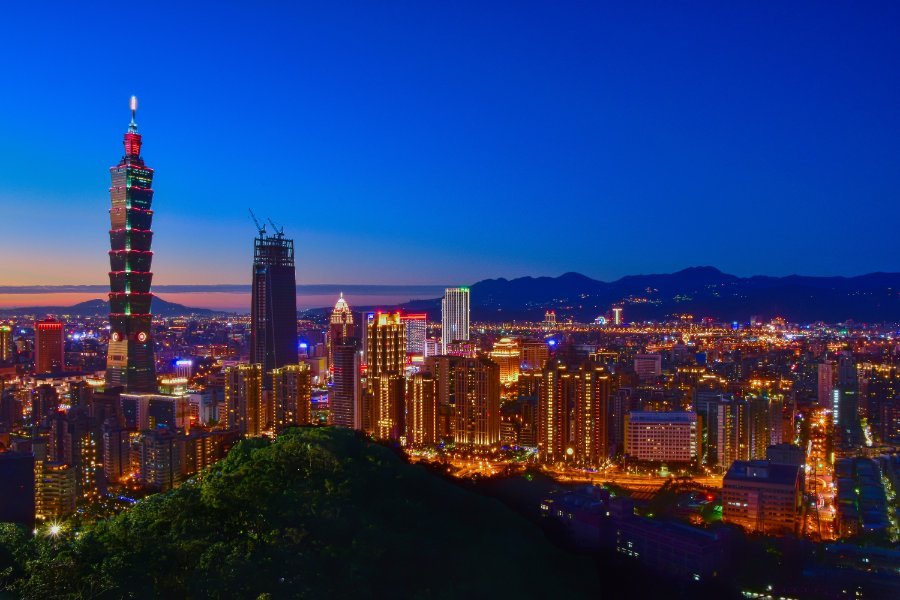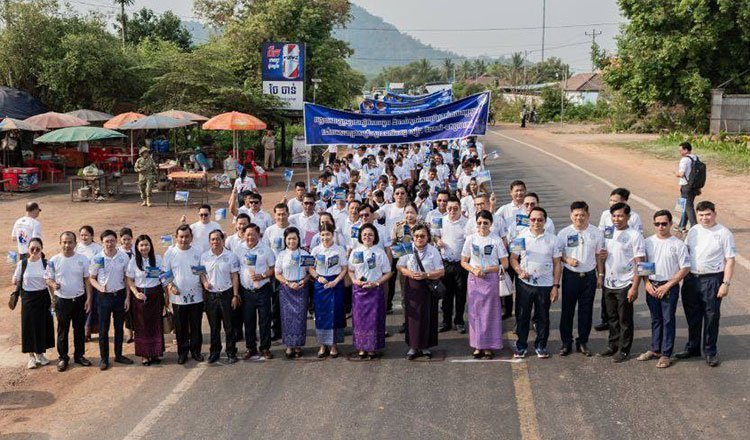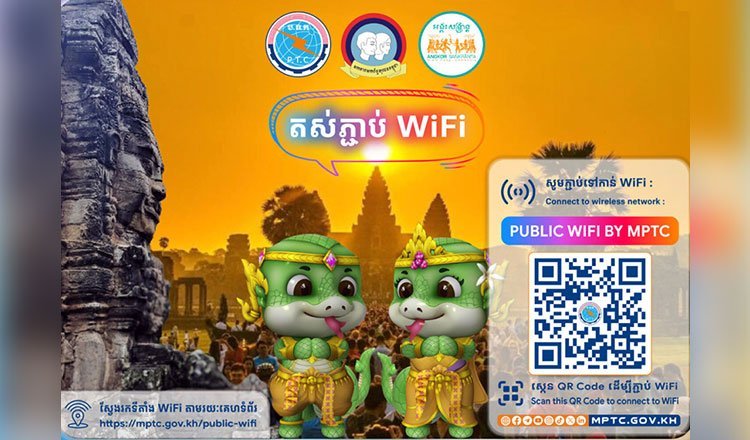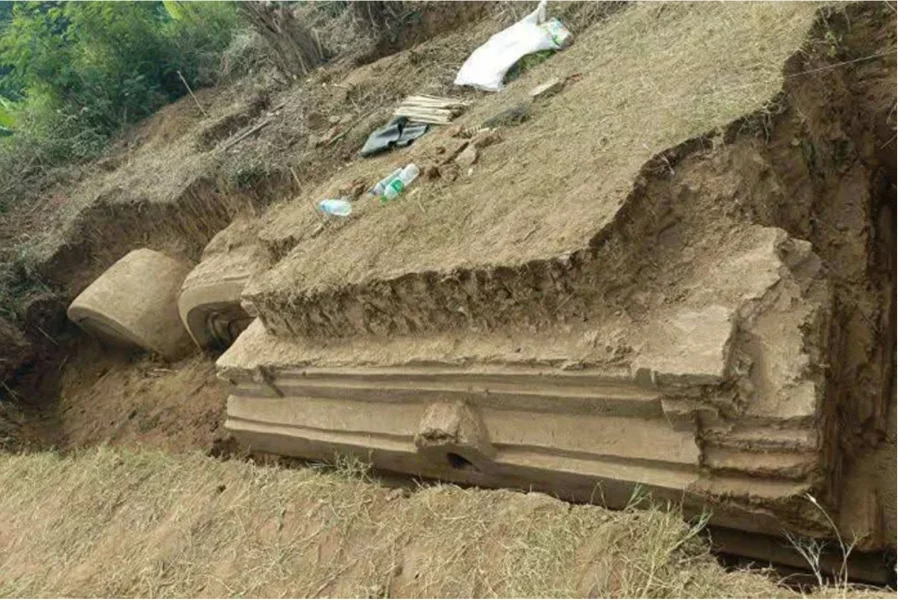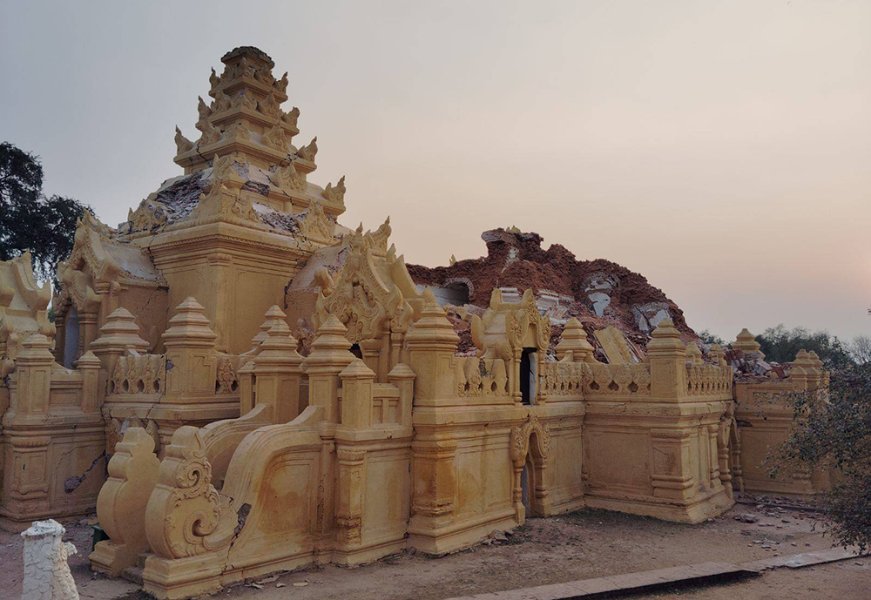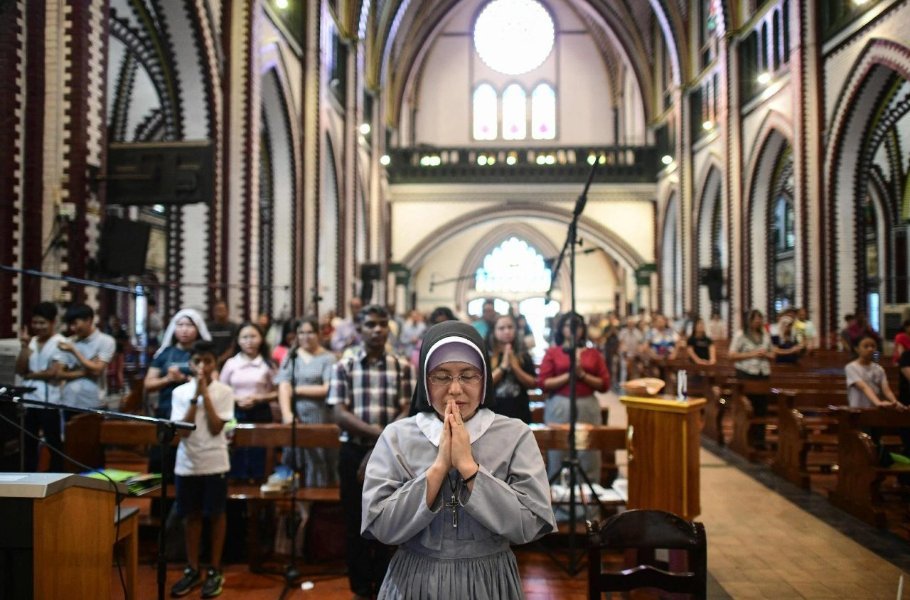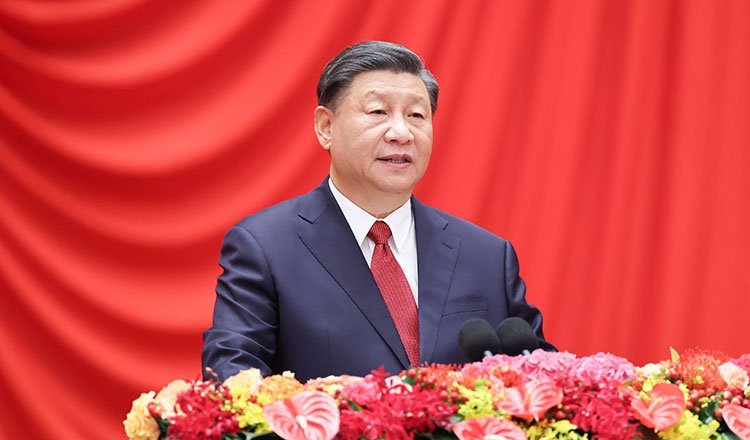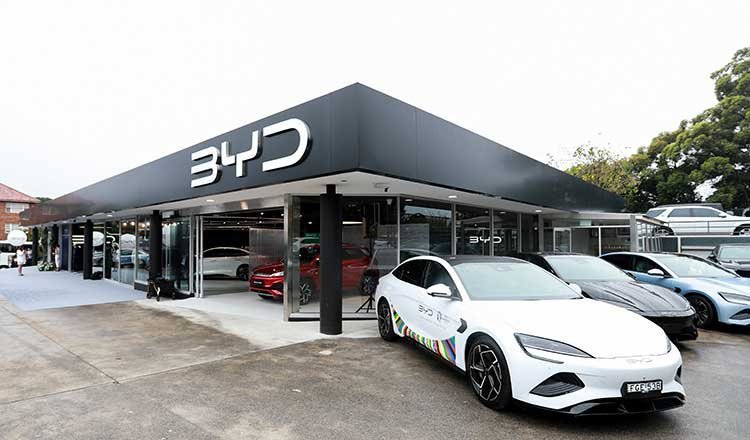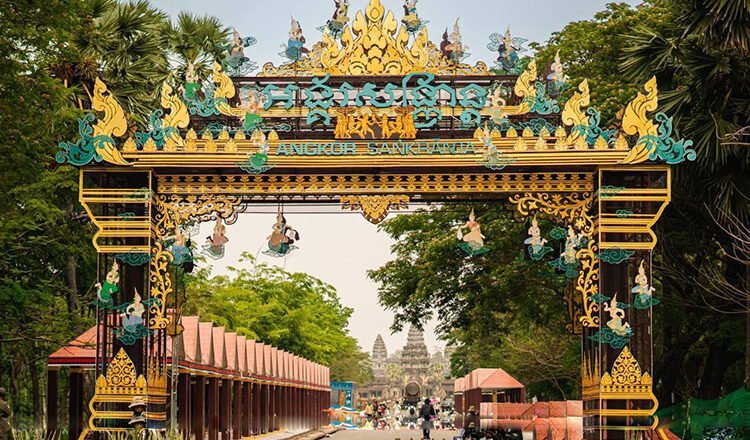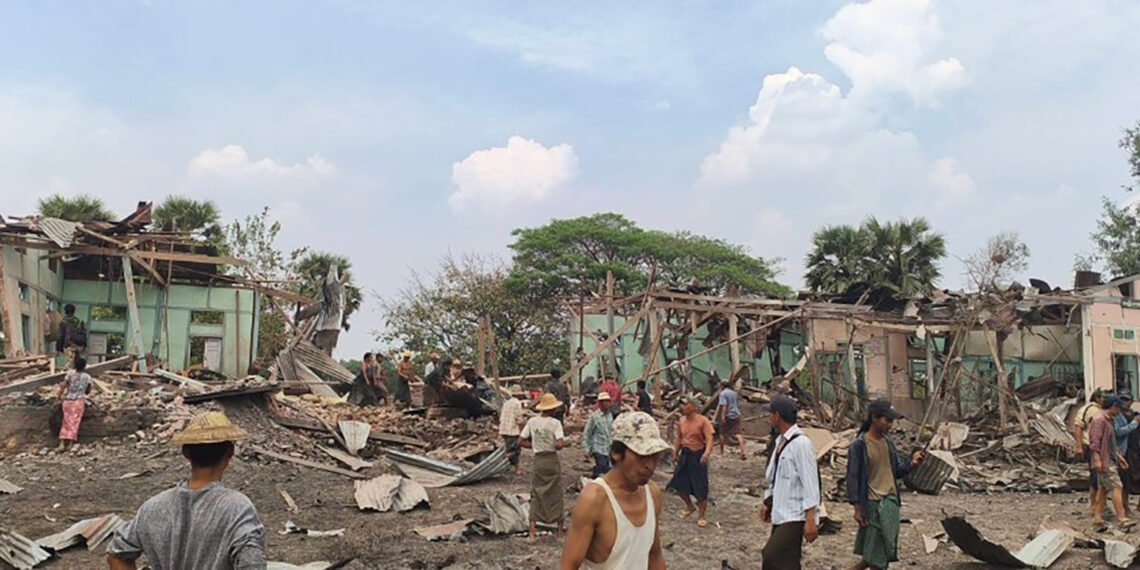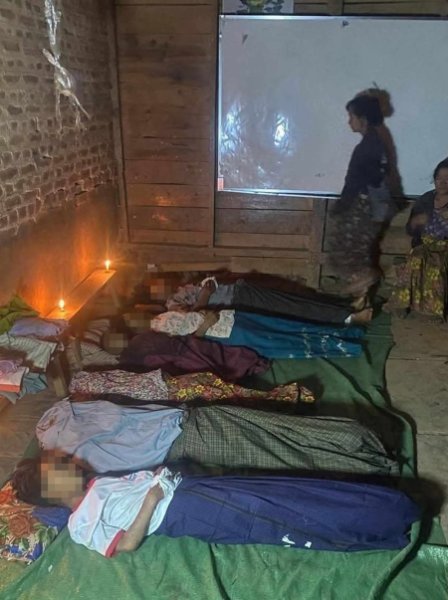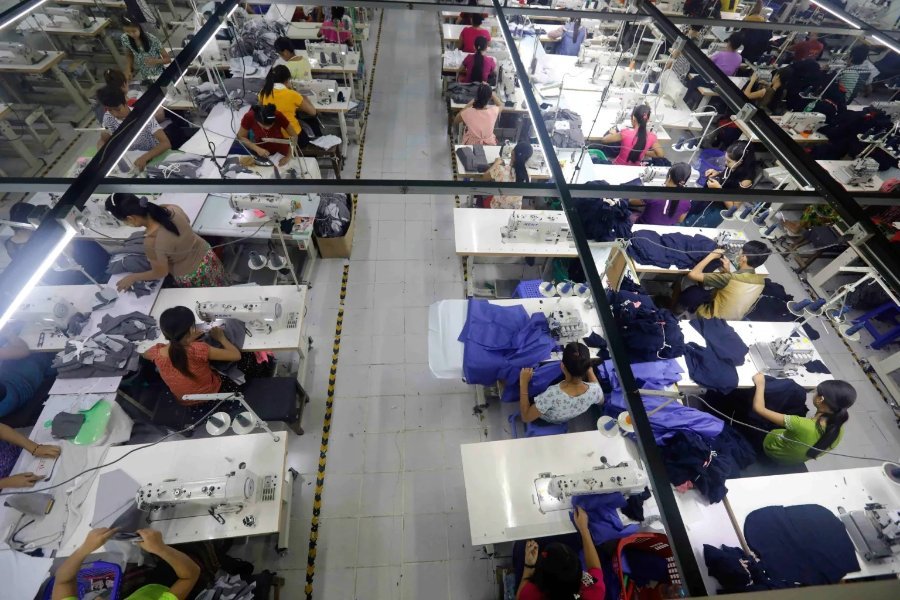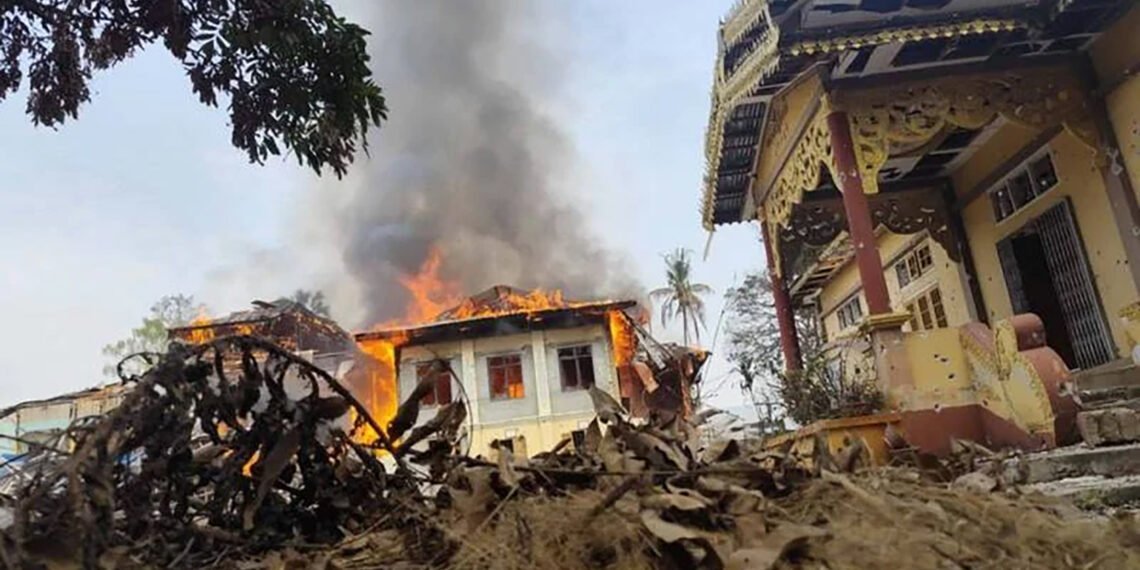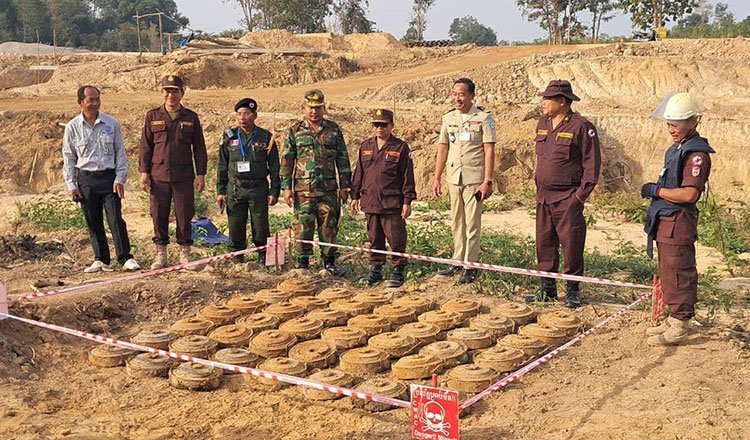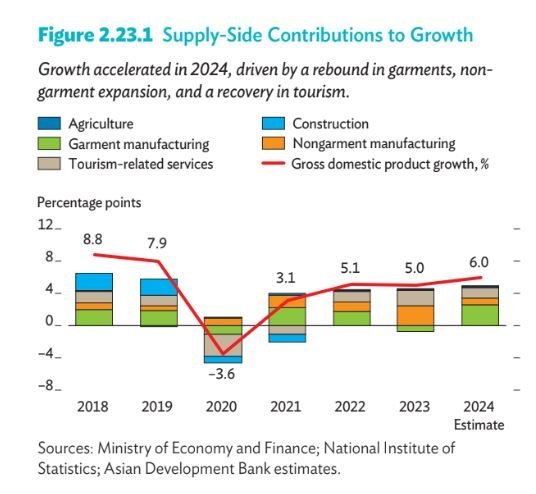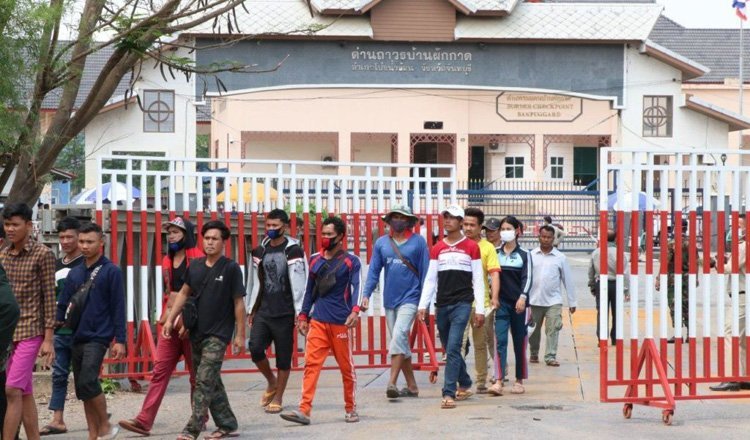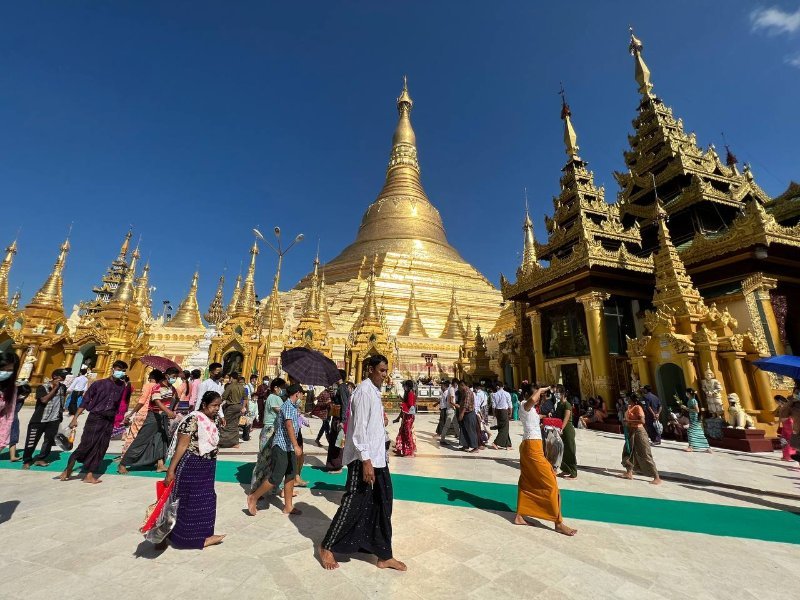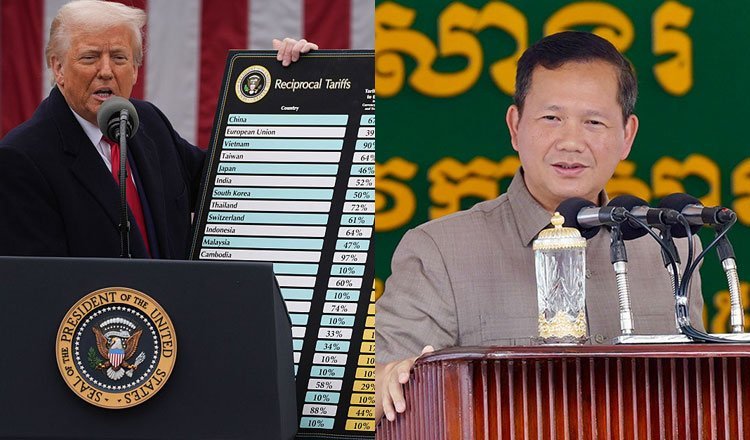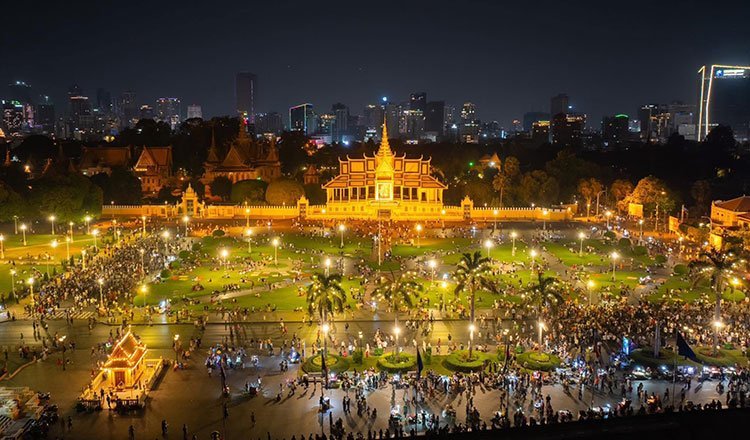-
Posts
15,576 -
Joined
-
Last visited
Content Type
Events
Forums
Downloads
Quizzes
Gallery
Blogs
Everything posted by geovalin
-
NBC Cambodia has officially joined Southeast Asia’s regional payment connectivity initiative, marking a major step toward deeper financial integration across the ASEAN bloc. The National Bank of Cambodia (NBC) confirmed its participation during a high-level meeting in Kuala Lumpur on 8 April, where the second phase of the Malaysia-Cambodia QR payment system was also launched. The announcement came on the sidelines of the 12th ASEAN Finance Ministers’ and Central Bank Governors’ Meeting. Cambodia becomes the ninth ASEAN member to join the Regional Payment Connectivity (RPC) initiative, which was first launched in 2022 by the central banks of Indonesia, Malaysia, the Philippines, Singapore and Thailand. The pact has steadily expanded, with Vietnam joining in 2023, followed by Brunei and Laos earlier this year. The RPC aims to make cross-border payments faster, cheaper, and more transparent. It supports payment technologies such as QR codes and real-time transactions, allowing consumers and businesses to move money seamlessly across borders. For small and medium-sized enterprises in particular, the system promises easier access to regional markets and improved trade and remittance flows. “Participating in the RPC initiative will foster regional economic growth and establish a more interconnected payment system within ASEAN,” said Dr Chea Serey, Governor of the National Bank of Cambodia. The move highlights Cambodia’s growing role in ASEAN’s digital economy and its ambition to modernise financial infrastructure. It also signals continued momentum behind efforts to harmonise payment systems in the region—crucial for strengthening intra-ASEAN trade and financial resilience. With the addition of Cambodia, the RPC’s expanding membership reflects broader regional aspirations to make cross-border transactions as simple as domestic payments. Observers expect more ASEAN economies—and possibly partners beyond the region—to adopt similar frameworks in the near future. -2025-04-15
-

Taiwan Protests as Cambodia Deports Fraud Suspects to China
geovalin posted a topic in Cambodia News
Taipei TAIPEI — Tensions have flared between Taiwan and Cambodia after nearly 190 online fraud suspects, many believed to be Taiwanese, were deported to China without prior notice or confirmation of their identities. Taiwan’s foreign ministry has strongly protested Cambodia’s decision, accusing it of bowing to pressure from Beijing and failing to follow international norms. The deportations followed a major police raid in Phnom Penh on 31 March, which saw the arrest of around 180 Taiwanese nationals and seven alleged Chinese co-conspirators linked to a sprawling online scam operation. Despite early engagement from Taiwan’s representative office in Ho Chi Minh City, which requested that the suspects be returned to Taiwan, Cambodian authorities moved ahead with the deportations to China late on Sunday and into Monday. No complete list of names or nationalities has been provided. “Cambodia, under pressure from China, did not provide a list of our country’s nationals or the total number deported,” Taiwan’s foreign ministry said in a statement, expressing “serious concern and protest”. Cambodia does not formally recognise Taiwan and, like most countries, supports Beijing’s position that Taiwan is a part of China. This has routinely complicated Taiwan’s attempts to secure the return of its citizens arrested abroad, particularly in fraud cases. Between 2016 and May 2024, more than 600 Taiwanese nationals detained overseas have been deported to China, not Taiwan. The ministry has again urged Cambodian authorities to respect international practice and hand over suspects to their home jurisdiction. It also issued a warning to Taiwanese citizens against participating in illegal overseas ventures, particularly in telecom fraud schemes, which have proliferated in the region. Cambodia has become a hotbed for such operations, often run by Chinese criminal networks based in heavily guarded compounds. Victims — frequently trafficked from Taiwan, Myanmar, and elsewhere — are lured by fake job offers and coerced into running online scams. Cambodia’s increasingly close ties with China, now its largest economic partner, have raised wider geopolitical concerns. Massive infrastructure projects and deepening military cooperation — including the controversial expansion of the Ream Naval Base — signal a growing Chinese presence in the region. Neither the Cambodian nor Chinese governments have commented on the deportations. -2025-04-15 -

Cambodia Launches Drive to End Child Labour in Brick Sector
geovalin posted a topic in Cambodia News
Ministry of Labour The Cambodian government has launched a fresh campaign to combat child labour in the country’s brick, tile, and agro-industrial sectors, with a focus on raising awareness and tightening enforcement in rural communities. Led by Secretary of State Soeung Sarsochetta, the Ministry of Labour and Vocational Training rolled out the initiative on Tuesday in Banteay Srei district, Siem Reap. Over 300 participants, including brick factory owners and local officials, attended the event. The campaign aims to prevent the most severe forms of child exploitation by informing employers, parents, and community leaders about the dangers of child labour, and by introducing labour inspection measures. It forms part of a broader national strategy to eradicate child labour from high-risk industries through community engagement, law enforcement, and cross-sector collaboration. Sarsochetta emphasised the importance of local authorities, police, and civil society in enforcing standards and creating safer environments for children. She urged all stakeholders to support the “One Enterprise, One Peaceful Community” initiative, which advocates for child labour-free workplaces. The campaign also encourages improved reporting systems through hotlines and online platforms, alongside strengthening the capacity of labour inspectors and child protection officers. The renewed focus follows growing criticism over the government’s handling of the issue. A 2023 report by rights group Licadho found that child labour and debt bondage remain widespread in Cambodia’s brick industry, driven by poverty, weak enforcement, and exploitation by employers. The report also criticised international brands for indirectly fuelling the problem through practices like waste burning in brick kilns. Sarsochetta acknowledged these concerns, calling for greater coordination among ministries, employers, and NGOs to ensure lasting change. As Cambodia continues its push for industrial development, the campaign is a reminder that economic progress must not come at the cost of children’s rights and wellbeing. -2025-04-14 -
Tourists and locals in Siem Reap can now enjoy free internet access at key locations, thanks to a new initiative by Cambodia’s Ministry of Post and Telecommunications. The ministry announced on Sunday that public WiFi is now available at major landmarks across the province, including the world-renowned Angkor Archaeological Park, the night market, and other heavily frequented public areas. The move aims to support both residents and the growing number of domestic and international visitors to the historic region. “In recognition of the increasing need for internet access… and in response to positive public feedback, we are pleased to provide free public WiFi,” the ministry shared via its official social media channel. Users can connect to the network by selecting PUBLIC WIFI BY MPTC or by scanning QR codes posted at participating locations. A full map of access points is available on the ministry’s website: https://mptc.gov.kh/public-wifi. The initiative reflects broader efforts to enhance digital connectivity across Cambodia and boost the tourism sector, which continues to recover following the disruptions caused by the COVID-19 pandemic. While no end date for the service has been announced, the ministry’s tone suggests the programme is part of a longer-term plan to make internet access more inclusive and accessible throughout the country. -2025-04-14
-
Emerging ruins in Inwa, Myanmar following a massive earthquake. Courtesy Myanmar's Department of Archaeology and National Museum A massive earthquake in Myanmar has revealed the remains of what may be a royal water palace, offering an extraordinary glimpse into the country’s imperial past. The 7.7-magnitude quake, which struck late last month and killed thousands, not only caused widespread devastation but also unearthed ancient ruins near Inwa, close to the town of Tada-U in central Myanmar. The newly exposed site is believed to date back to the Konbaung Dynasty, the last royal dynasty before British annexation in 1885. Archaeologists say the structure includes stairways, foundation walls, and the remains of pavilions—features that match descriptions in centuries-old palm-leaf manuscripts. The site was likely part of Ratnapura Ava, or the "City of Gems," an imperial capital used by Burmese monarchs between the 14th and 19th centuries. Parts of the structure—specifically the southern Thayetkin staircase—were first discovered in 2009 by local residents and later maintained by Myanmar’s Department of Archaeology and National Museum. However, the recent earthquake has revealed previously hidden sections, believed to be part of a ceremonial water structure used by kings for ritual purposes. “This is a monumental discovery,” one official said, highlighting plans to fully excavate and preserve the site. Authorities hope to make it accessible to the public in future, as both an educational resource and a reminder of Myanmar’s deep cultural heritage. Inwa itself is steeped in history. Once repeatedly looted and rebuilt, it was finally abandoned after a series of major quakes in 1839. The recent seismic activity appears to have once again shifted the earth—this time revealing rather than destroying. The discovery has sparked renewed interest in the region’s past, even as the country grapples with a humanitarian crisis caused by the earthquake and ongoing conflict. Amid the ruins, a fragment of Myanmar’s lost royal splendour has come to light. -2025-14-14
-
- 1
-

-
The heavily damaged Me Nu Brick Monastery in Innwa after 03/28 earthquake / The Irrawaddy A 5.5-magnitude earthquake struck central Myanmar early Sunday, prompting panic as residents fled their homes—just weeks after a deadly temblor devastated large parts of the country. The tremor, centred near Meiktila in the Mandalay Region, was one of the strongest aftershocks yet following the catastrophic 7.7-magnitude earthquake on 28 March. That disaster killed at least 3,649 people and injured more than 5,000, according to Myanmar’s military government. Sunday’s quake, though less powerful, rattled nerves and damaged buildings across towns near the epicentre. In Wundwin township, residents reported cracked walls, ceiling damage, and a rush of people fleeing into the streets in fear. “People rushed out of buildings,” one local told Associated Press, speaking anonymously due to fear of reprisal from military authorities. Another described minor debris falling inside homes. Meanwhile, residents in Naypyitaw, the capital, said they did not feel the tremor—highlighting its more localised impact. Still, the psychological toll was evident as the country, already reeling from the March disaster, faces renewed anxiety. The original quake flattened villages, crippled hospitals, and disrupted key infrastructure, deepening an already dire humanitarian crisis. The UN last week warned that the destruction is compounding existing challenges, including ongoing armed conflict and the displacement of over 3 million people. The timing of the aftershock added to the national trauma. It struck during Thingyan, Myanmar’s traditional New Year holiday, which had already been cancelled in mourning for recent victims. Although no new casualties have been reported from Sunday’s tremor, the event underscores the region’s vulnerability and the population’s fragile sense of safety. With information tightly controlled and criticism of the military restricted, many residents remain fearful—not just of further quakes, but of speaking openly about their plight. -2025-04-14
-
- 1
-

-
A recently built Catholic church in Myanmar’s Christian-majority Chin State has been destroyed in an airstrike by the military junta, the latest in a wave of attacks targeting places of worship amid the country’s grinding civil war. The Church of Christ the King, located in the town of Falam and part of the Diocese of Hakha, was bombed on 8 April as government forces continued air assaults following their loss of ground to local resistance fighters. Though the church’s walls remain standing, the roof and interior were left in ruins, according to local reports. Consecrated only in November 2023, the church had replaced a small chapel that served the Catholic community for over 75 years. Built with significant local effort and sacrifice, it had become a vital spiritual centre for the town’s roughly 1,000 Catholics. “There is great sadness now in the community,” a source told Fides News, “but also the desire and determination to rebuild.” Falam has seen fierce clashes over the past nine months between Myanmar’s army and the Chinland Defence Force (CDF), a local militia resisting military rule since the 2021 coup. After losing control of the city to the CDF, the junta resorted to aerial bombardments — a tactic increasingly used across the country. This is not the first time churches have been targeted. In February, another airstrike damaged the Church of the Sacred Heart of Jesus in Mindat, set to become the cathedral of a newly established diocese announced by Pope Francis earlier this year. According to the Chin Human Rights Organization, at least 107 religious buildings — including 67 churches — have been destroyed by military airstrikes in Chin State alone since the conflict began. The destruction of the Church of Christ the King is a stark reminder of the heavy toll Myanmar’s war continues to exact on religious minorities, civilian life, and cultural heritage — often without distinction or warning. -2025-04-12
- 1 reply
-
- 1
-

-
Myanmar’s military regime is facing growing resistance to its forced conscription programme, with thousands of young men and women fleeing the country or going underground to avoid being sent to war. One year after the junta launched its conscription drive, an estimated 60,000 recruits have been drafted—many against their will. The policy, revived in early 2023 as the army struggled with battlefield losses and desertions, has triggered widespread fear, defiance, and a mass exodus of would-be conscripts. Under the law, men aged 18 to 35 and women aged 18 to 27 can be forced into service. Those who refuse face up to five years in prison. Reports suggest some young people have been abducted from bus stops or coerced at gunpoint, while others, like 29-year-old teacher Aung, have fled the country entirely. “I don’t want to be part of the killers,” Aung said from a safehouse in Thailand. “They are destroying the whole country.” Analysts say the military is using conscripts as frontline fodder, often rushing them into combat with minimal training. Some draftees have been used as human shields or sent to dismantle explosives, leading to high casualties and further desertions. Despite the surge in numbers, experts argue the draft has failed to shift momentum in a civil war that has raged since the 2021 coup. Rebel groups have captured key bases, and the military’s control may now extend to less than a quarter of the country, excluding major cities. The draft has bought time for the regime, shoring up defences and allowing limited offensives. But it’s no solution to what analysts describe as a “historic weakness” in the military. As pressure mounts from China for negotiations, some speculate the junta’s endgame may now be to hold ground until a ceasefire becomes viable. In the meantime, those like Aung live in limbo — out of reach of the regime, but never out of danger. “If I’m forced back,” he said, “I know exactly what will happen. And I won’t survive it.” -2025-04-12
-
- 2
-

-

-
In a significant diplomatic move, Chinese President Xi Jinping will make a two-day state visit to Cambodia next week, reaffirming the countries’ longstanding alliance and strategic partnership. The visit, taking place from 17–18 April at the invitation of King Norodom Sihamoni, marks Xi’s second state visit to the Kingdom — his first was in 2016. It is expected to deepen bilateral cooperation and expand China’s influence in the region. During his stay, President Xi will attend Royal Audiences with both the King and Queen-Mother Norodom Monineath Sihanouk at the Royal Palace. He will also meet with key political figures including Senate President Hun Sen and Prime Minister Hun Manet to discuss strengthening ties and addressing regional and global matters of shared concern. Officials from both sides are preparing for the signing of numerous agreements, covering sectors ranging from infrastructure to trade and education. These documents are set to bolster the already robust "ironclad friendship" and Comprehensive Strategic Partnership between the two nations. Cambodian authorities have hailed the visit as a milestone in diplomatic relations, noting that it builds on decades of cooperation and mutual support. The Ministry of Foreign Affairs has described it as “a historic opportunity to elevate Cambodia–China relations to new heights.” As the world watches, Xi’s visit is expected to highlight China’s growing role in Southeast Asia — and Cambodia’s pivotal position in Beijing’s regional strategy. -2025-04-12
-
In a bold move signalling deepening economic ties, Chinese electric vehicle (EV) giant BYD has announced plans to begin assembling cars in Cambodia by the final quarter of 2025. The news follows a high-level meeting in Phnom Penh between BYD’s delegation, led by Executive Director Xiao Haiping, and Deputy Prime Minister Sun Chanthol, who praised the investment as a vital step for Cambodia’s industrial growth. BYD, based in Shenzhen, is one of the world’s leading EV manufacturers and aims to position Cambodia as a key assembly hub in Southeast Asia. The plant will operate within the Sihanoukville Special Economic Zone, initially focusing on supplying the domestic market. Production is expected to begin by November 2025, with electric vehicles rolling off the assembly line before the year’s end. “BYD’s presence reflects confidence in our investment climate,” said Chanthol. “We expect strong growth in EV adoption as a result.” The groundbreaking ceremony for the factory is scheduled to take place later this year. Cambodian officials have reaffirmed their commitment to supporting foreign investment through the Council for the Development of Cambodia, which acts as the government’s central investment facilitator. The development signals not only a boost for Cambodia’s automotive sector but also a shift in the region’s EV supply chain. As countries look to embrace green mobility, BYD’s move is likely to accelerate Southeast Asia’s transition to electric transport. For Cambodia, the venture could mean new jobs, skills transfer, and a significant step towards industrial modernisation. -2025-04-12
-
Siem Reap Administration With just days to go before the 2025 Khmer New Year celebrations (April 14–16), hotels and guesthouses across Cambodia are reporting full bookings, as excitement builds for the annual Sankranta festivities. In Siem Reap, the heart of the Angkor Sankranta festival, nearly all accommodations have been snapped up by eager domestic and international travelers. Themed “Smiles for the New Year Celebration”, this year’s event will be officially opened by Prime Minister Hun Manet and is expected to significantly boost local tourism and the broader economy. "All our rooms are fully booked," said a staff member at Golden Orchid Angkor, noting that bookings have surpassed last year’s numbers. Similar reports have come from hotels like Siem Reap River View Resident and others across the city. According to Sokhom Samol, Executive Director of the Siem Reap Tourism Club Association, “The Sangkranta festival is bigger and more attractive than last year, which has significantly boosted the province’s economy.” Provincial authorities have placed a strong emphasis on fair pricing, hygiene, and quality service, urging hospitality providers not to inflate costs during the holiday season. “Unreasonable price hikes can hurt the reputation of Siem Reap and the Sankranta celebration,” warned Deputy Governor Ngouv Sengkak. As of March, Siem Reap had 224 hotels offering over 13,500 rooms and 302 guesthouses with nearly 4,700 rooms, according to tourism department figures. Celebrations are not limited to Siem Reap. In Preah Sihanouk province, accommodations in Koh Rong Island and Sihanoukville are nearly fully booked, with officials promising vibrant entertainment programs throughout the holiday. Phnom Penh, Kampong Thom, and Battambang are also joining the nationwide celebration, setting up cultural events, water stations, and decorative lighting to welcome visitors. Last year, Cambodia saw nearly 22 million travelers during Khmer New Year. Officials expect this year’s turnout to surpass that, following calls by the Ministry of Tourism to raise service standards and ensure transparent pricing. As anticipation grows, businesses and authorities alike are working to make this year’s Khmer New Year a memorable, safe, and culturally rich experience for all. -2025-04-11
-
Genuine and official site Cambodia’s immigration authorities have issued a warning about a fraudulent website impersonating the country’s official e-arrival platform, urging travelers to exercise caution to avoid scams and identity theft. In a statement released on April 9, the Ministry of Interior’s General Department of Immigration (GDI) identified cambodia-e-arrival.com as a non-official site unaffiliated with the Cambodian government. The only legitimate platform for electronic arrival forms, they emphasized, is www.arrival.gov.kh, identifiable by its “gov.kh” domain. Travelers can also use the “Cambodia e-Arrival” app, which is part of the government’s push to modernize and simplify the entry process. “Please verify carefully to avoid using fraudulent websites that may lead to financial losses or the illegal theft of personal information,” the GDI stated, warning that no service fees are required to submit arrival information through official channels—apart from standard visa charges. Authorities said legal action will be taken against anyone found operating fake immigration sites or apps for personal profit. Launched in September 2024, Cambodia’s e-arrival system is designed to streamline the immigration process at airports and other entry points, enabling tourists to apply for visas upon arrival and cutting down on paperwork. As tourism continues to rebound, the GDI urged visitors to remain vigilant when accessing online services related to travel to Cambodia. -2025-04-11
-
- 1
-

-
Kawlin info Julie Bishop, the United Nations’ special envoy for Myanmar, has made her first visit to the country since assuming the role last year, arriving just over a week after a catastrophic earthquake left more than 3,600 dead. Bishop met Myanmar’s foreign minister, Than Swe, and other officials on Wednesday in Naypyitaw, where government offices now operate from makeshift tents following severe quake damage. The trip marks the UN’s most high-profile diplomatic engagement in Myanmar since the quake struck, compounding the nation’s existing political and humanitarian crisis. The 7.7-magnitude earthquake devastated six states and regions, toppling homes, schools, and monasteries, and cutting off access to entire communities. According to military officials, over 48,000 homes and thousands of public buildings were destroyed. More than 5,000 people were injured, with hundreds still missing. Bishop’s visit, described by the UN as a gesture to “reinforce its commitment to peace and dialogue,” follows her meetings in Malaysia — a key regional player in humanitarian coordination. However, the envoy's presence has not been without controversy. Last month, anti-junta groups accused her of ties to Chinese companies with business interests in Myanmar. She has denied any conflict of interest. With much of the international community shunning Myanmar’s military rulers over human rights abuses, Bishop’s visit has drawn both attention and scrutiny. The junta remains heavily supported by China and Russia, despite widespread condemnation over its 2021 coup and ongoing violent suppression of dissent. Humanitarian agencies are calling the current situation “a crisis on top of a crisis.” CARE Myanmar’s director, Arif Noor, described the earthquake’s impact as devastating: “This catastrophe has brought already vulnerable communities to their knees.” The UNHCR has rushed emergency aid to some 25,000 people and plans to assist 25,000 more, but warned that stockpiles are running low. While both the junta and resistance groups have announced brief ceasefires to allow aid efforts, independent reports indicate continued fighting on the ground. As Myanmar grapples with conflict, displacement and disaster, the effectiveness of Bishop’s visit — and the international response it may galvanise — remains to be seen. -2025-04-11
-
CJ Myanmar’s military junta has launched deadly airstrikes across civilian areas in Sagaing Region and Chin State, killing more than 30 people this week in one of the bloodiest assaults since it declared a ceasefire less than two weeks ago. On Wednesday, warplanes bombed Nankham village in northern Sagaing, targeting a food court and an internet café near a public hospital. Eyewitnesses say children were among the dead and injured, with the military returning to strike during rescue efforts. Independent monitors suggest at least 20 people were killed in that attack alone. A day later, fighter jets dropped two 500lb bombs on a school in In Pin Hla village, Kawlin Township, killing three people, including a child. Elsewhere, six civilians — among them a pastor and an eight-month-old baby — died in an airstrike on Pwi village, Mindat Township, in Chin State. A separate bombing that same night in Saizang village reportedly wiped out a family of six. The aerial campaign comes in the wake of mounting resistance successes. Earlier in the week, ethnic and pro-democracy forces, including the Kachin Independence Army and All Burma Students’ Democratic Front, seized Indaw town, 46km north of the targeted Sagaing villages. In Chin State, resistance fighters from the Chin Brotherhood coalition took control of Falam town on Monday. Despite announcing a ceasefire on 2nd April following a devastating earthquake, the junta has continued to launch attacks across the country. The National Unity Government’s Human Rights Ministry recorded 92 strikes and shelling incidents between 28th March and 8th April, leaving at least 72 dead and nearly 100 wounded. A junta spokesman claimed anti-regime forces had attacked military positions in several regions this week, but stopped short of addressing the latest civilian casualties. With ceasefire promises shattered and civilian death tolls rising, international concern is once again mounting — but the junta appears undeterred, pressing forward in its brutal campaign to hold power. -2025-04-11
-
EPA Myanmar’s garment industry has warned that new US tariffs could derail the country's fragile recovery from last month’s deadly earthquake, which has already left over 3,600 dead and thousands injured. The 44% import tax, part of President Donald Trump’s latest trade policy shift, is set to come into effect this week—just as the Southeast Asian nation grapples with the aftermath of the 28 March quake that flattened homes, schools, and monasteries across its central regions. The Myanmar Garment Manufacturers Association (MGMA), representing an industry that employs over half a million people—mainly young women—said the tariffs risk pushing struggling businesses over the edge. “In the wake of such widespread devastation, these measures could not come at a worse time,” the MGMA said in a statement. “They will deepen the hardship faced by both businesses and communities.” The garment sector is one of Myanmar’s few remaining economic lifelines, especially amid the broader turmoil since the military coup in 2021. The ongoing civil conflict has splintered the country, displaced over 3.5 million people, and driven half of its population into poverty. Bilateral trade between the US and Myanmar totalled $734 million last year, but Myanmar’s exports have already dropped sharply. The MGMA has urged Washington to reconsider the tariff hike, asking for a “more lenient rate in light of the country’s multiple crises.” The earthquake has only compounded the nation’s economic and humanitarian distress. According to junta officials, more than 160 people are still missing and over 5,000 are injured. Further straining the country, Trump has also slashed humanitarian aid and paused a key refugee programme that once supported many fleeing Myanmar’s conflict zones. The World Food Programme recently confirmed it will cut food aid to one million people due to budget shortfalls worsened by these US funding cuts. As Myanmar faces catastrophe on multiple fronts—natural, economic, and political—its garment manufacturers are warning that added financial pressure from abroad could prove devastating. -2025-04-10
-
TNLA More than a week after Myanmar’s deadliest earthquake in decades, a lack of internet access is hampering emergency efforts and leaving families in the dark about missing loved ones. The 7.7 magnitude quake struck on 28 March, with Mandalay at its epicentre. Over 3,500 people are confirmed dead, many still buried beneath the rubble. But in vast parts of the country, survivors remain unaware of the full scale of the disaster—thanks to a digital blackout imposed by the military junta. Since seizing power in 2021, Myanmar’s military has restricted online access in an attempt to crush dissent. Entire regions have been left without internet, while others face heavy censorship and firewalls. Now, these blackouts are stalling vital aid and blocking communication between families, relief workers, and authorities. “It’s so difficult to connect with friends and family to make sure they’re okay,” said Gus, an LGBTQ+ activist in Sagaing. He hasn’t heard from two friends who were in Mandalay when the quake struck. “I’m so worried about them.” Aid workers say the blackout is leading to dangerous delays. In areas without any connectivity, residents must travel days just to report needs. Relief teams, meanwhile, are relying on limited Starlink satellite connections, which remain unaffordable for most locals. “Three days passed before help arrived in my town,” said Gus, who accessed news through a Starlink link operated by local business owners. The junta’s control over digital communications is drawing international criticism. Yadanar Maung, of Justice For Myanmar, called it a “digital dictatorship” and urged telecom firms and foreign governments to pressure the regime to restore access. While satellites and AI tools—like Microsoft's AI for Good and the EU’s Copernicus—are helping map damage remotely, aid groups say there’s no substitute for on-the-ground contact. “We can see where people are, but we can’t hear what they need,” one anonymous aid worker said. “No technology replaces being there.” With rain and military interference worsening conditions, the crisis response remains perilously hampered—leaving thousands at risk in the wake of disaster. -2025-04-10
-
CMAC Nearly half of all landmine accidents in Cambodia over the past decade have taken place outside officially recorded minefields, according to alarming new figures released by the Cambodian Mine Action and Victim Assistance Authority (CMAA). The revelation has raised serious concerns over the scale of unexplored contamination, particularly along the country’s western border with Thailand—a region scarred by decades of past conflict and now under renewed scrutiny. Of the more than 600 mine-related incidents recorded between 2015 and 2024, 49% occurred in areas not previously identified as hazardous. These findings have prompted the Cambodian Mine Action Centre (CMAC), working with the Royal Cambodian Army, to ramp up efforts to map and survey the border provinces more comprehensively. Heng Ratana, Director General of CMAC, said the latest survey—underway since November and set to conclude by June—marks a significant push to uncover remaining danger zones. “We’re now focusing on previously unsurveyed districts along the Cambodia–Thailand border,” he said. “We use witness accounts, physical evidence, drones, and detailed mapping to identify contaminated sites.” To mitigate risks during the operation, CMAC is running awareness campaigns in each village surveyed. Local residents are briefed on potential dangers, and village leaders are informed of known risks before teams move on. First Vice-President of the CMAA, Ly Thuch, underlined the strategic importance of this work in realising Prime Minister Hun Manet’s pledge to deliver a mine-free Cambodia. But he warned the mission requires sustained international support. “We need advanced technology, better survey tools, and robust data systems to guide our efforts,” he said. Cambodia remains one of the most heavily mined countries in the world, a legacy of prolonged conflict that continues to threaten rural communities today. While progress has been made, the latest figures suggest the problem is far from over—and that many threats remain hidden just beyond the maps. -2025-04-10
-
Cambodia’s economy is set to expand by 6.1% in 2025, driven by resurgent exports and a tourism revival, according to the Asian Development Bank’s (ADB) latest forecast. The upbeat projection comes after a stronger-than-expected 6.0% growth in 2024, but the recovery remains uneven—shadowed by risks in the real estate sector, rising inflation, and structural bottlenecks. The Asian Development Outlook April 2025 notes that industrial output remains Cambodia’s key growth engine, fuelled by a 23.5% surge in garment exports and renewed foreign investment in non-garment manufacturing. Tourist arrivals rebounded to pre-pandemic levels last year, particularly from neighbouring countries, bolstering services. Yet the recovery hasn’t reached all corners of the economy. Construction remains sluggish, weighed down by weak demand and a subdued property market. Inflation, which averaged just 0.8% in 2024, is forecast to rise sharply to 3.7% in 2025, driven by higher food demand and a low-base effect. Agriculture grew just 0.9% last year due to El Niño-related droughts, though exports of cassava, rubber, and cashew nuts offered some support. Looking ahead, modest gains are expected, with growth projected at 1.0% in 2025, aided by new trade deals with China and South Korea. Fiscal pressures are also building. The government’s budget deficit widened to $0.9 billion in 2024, and is set to grow to $1.5 billion in 2025, as it boosts spending to support recovery. Public debt remains manageable at 26.3% of GDP. The ADB highlights the need for deeper reform, especially in digital infrastructure, to sustain long-term growth. While Cambodia has made strides in rolling out digital ID systems and broadband access, it still ranks low on global e-governance benchmarks. Analysts warn that without significant investment in skills and regulatory frameworks, productivity gains will stall. The overall outlook remains positive—but fragile. With the global trade environment uncertain, a weak property market, and inflation creeping up, much will depend on the government’s ability to navigate risks and drive reform. Cambodia may be bouncing back—but sustaining the momentum will take more than just export numbers. -2025-04-10
-
KT In a move to protect citizens and ensure smoother travel during the Khmer New Year, Cambodia’s Ministry of Interior has issued a directive aimed at stopping unofficial service fees being demanded at border crossings with Thailand. The announcement, made public on April 8, instructs provincial administrations along the Thai border to prevent, investigate, and take action against any individuals or officials who solicit illegal payments from Cambodians crossing the border for the traditional holiday. Key measures outlined in the Ministry’s letter include: Enhancing border security and order before, during, and after the New Year period. Boosting staff at immigration checkpoints and possibly coordinating with Thai authorities to extend crossing hours to avoid congestion. Deploying support forces to assist citizens with border procedures and respond to any incidents or disruptions. Ensuring that transport prices remain stable, calling on transport companies to avoid raising fares during the holiday. Working with Thai counterparts to waive visa (Re-Entry Permit) fees for Cambodians and raising public awareness of the exemption. The Ministry also signaled that, depending on the situation, special task forces or committees could be formed to coordinate cross-border movement and assist travelers more effectively during the busy holiday season. The directive follows growing public concern over unofficial fees and aims to uphold fairness and accessibility for Cambodians traveling to and from Thailand to reunite with family or take part in New Year festivities. -2025-04-09
-
Ministry of Information In a timely move to ease congestion during the upcoming Khmer New Year, Cambodia's tallest bridge — Bridge 28 — will temporarily open for public use, offering travelers a rare preview of the massive infrastructure project. Spanning 537 meters in length and soaring 90 meters high, the bridge is part of National Road 10 in Pursat province’s Veal Veng district. It will be open to light vehicles, including cars and small tour vans, from April 11 to April 17, between 6 AM and 6 PM daily, according to Deputy Prime Minister Sun Chanthol during a recent site visit and ceremonial concrete-pouring event. Constructed with approximately $25 million from Cambodia’s national budget, Bridge 28 is being built by the China Road and Bridge Corporation (CRBC), with technical oversight by Guangzhou Wanan Construction Supervision Company. The bridge is a centerpiece of the nearly 200-kilometer-long National Road 10, which connects Battambang, Pursat, and Koh Kong provinces. Beyond its practical role in boosting regional connectivity, Bridge 28 is set to become a tourist magnet. A 15-meter-wide scenic viewpoint at the midpoint offers sweeping vistas of the surrounding landscape, and newly built parking areas at both ends can accommodate up to 70 vehicles, making it an attractive pit stop for travelers. The broader National Road 10 project — launched in March 2020 — is now more than 96% complete. Once finished, it will serve as a crucial route for trade, tourism, and economic growth in western Cambodia. For now, Bridge 28 will give holidaymakers a taste of the future — and a smoother ride home for Khmer New Year. -2025-04-09
-
Johannes & Co Recent headlines about India’s Lalit Patidar, the teenager with the world’s hairiest face, have stirred memories in Myanmar of an extraordinary family once known across the globe as the “Hairy People of Burma.” In the 19th century, four generations of one Burmese family captivated royalty and colonials alike with their striking appearance—faces and bodies thickly covered in hair due to a rare genetic condition known as hypertrichosis lanuginosa. Unlike Patidar, their condition affected their entire bodies, earning them the nickname “monkey people”—a label far removed from their otherwise ordinary intelligence and manner. At the heart of this story was Shwe-Maong, first recorded by British envoy John Crawfurd in 1826 during a diplomatic mission to King Bagyidaw’s court in Ava, following the First Anglo-Burmese War. Gifted to the king as a child from present-day Laos, Shwe-Maong grew up within the royal court, eventually marrying and fathering four children—one of whom, Maphoon, inherited his distinctive hair. Maphoon herself became a figure of fascination. When Captain Henry Yule visited Amarapura in 1855, he found her widowed but living comfortably. She had refused an Italian suitor after the king offered a generous dowry to ensure she married a Burmese man. That union produced Moung-Phoset, equally furry, who went on to have a daughter—Mah-Me—who also carried the genetic trait. This unusual lineage spanned nearly a century in Mandalay, serving successive kings, receiving royal privileges, and even managing market taxation under King Mindon. Their tale took an international turn in 1886, after the fall of King Thibaw and the collapse of the Burmese monarchy. With the help of Italian ex-military advisor Captain Paperno, Maphoon and Moung-Phoset travelled to Europe, performing at London’s Egyptian Hall and later under P.T. Barnum’s banner in the U.S. as the “Sacred Hairy Family of Burma.” Maphoon, reportedly blind by then, died in Washington in 1888. What became of Moung-Phoset remains a mystery. Despite their global fame in the 1800s, no similar cases of hypertrichosis have been recorded in Myanmar since. The family’s story, once at the intersection of science, spectacle and empire, now lingers as a curious chapter in both medical history and Burmese folklore. -2025-04-09
-
- 1
-

-
Sai Zaw Thaike Myanmar’s military regime has suspended all tourist visa applications in the wake of a powerful earthquake that devastated large parts of the country late last month. The 7.7-magnitude quake, which struck central Myanmar on 28 March, has left over 3,600 people dead and thousands more injured, according to official figures. More than 200 remain missing. In response, the junta has halted tourist entries as recovery efforts stretch thin across Mandalay, Naypyidaw, Sagaing, and southern Shan State. The Ministry of Immigration and Population announced the visa suspension last week, citing “ongoing recovery efforts” and the extent of the damage. Business visas will still be processed, but all other travel for leisure is on hold indefinitely. The move comes amid growing scrutiny over the junta’s handling of the crisis. Foreign journalists have been barred from entering affected areas, with military officials claiming that a lack of electricity, water, and shelter makes access impossible. However, human rights groups accuse the regime of using the disaster to further restrict press freedom and suppress independent reporting. “It is not possible for foreign journalists to come, stay, find shelter, or move around here,” said junta spokesperson Maj-Gen Zaw Min Tun in a state media broadcast, urging the international community to “understand” the decision. Independent journalists, many working in secret from inside Myanmar or from across the Thai border, continue to report on the situation at great personal risk. The country’s track record on press freedom remains dire—journalist Sai Zaw Thaike was handed a 20-year prison sentence in 2023 for covering a cyclone’s aftermath. International organisations have condemned the ongoing information blackout and called for unimpeded access for both aid workers and reporters. With entire communities displaced and infrastructure crippled, the absence of transparency has raised concerns over the true scale of the humanitarian crisis. Travellers and tour operators are being urged to cancel or postpone any plans to visit Myanmar. Officials say updates will be provided once the situation stabilises, but with rescue operations still under way and communications patchy at best, there is no clear timeline for reopening. For now, the country's famed temples and cultural landmarks remain off-limits, as Myanmar contends with disaster recovery amid deepening isolation. -2025-04-09
-
- 1
-

-
Prime Minister Hun Manet has firmly rejected claims that Cambodia imposes a 97% tariff on US goods, clarifying that the figure reflects a trade imbalance—not an actual tax rate—and signalling his readiness to negotiate directly with former US President Donald Trump if required. Speaking at the inauguration of the Morodok Techo Skybridge in Phnom Penh on 7 April, Hun Manet addressed the growing concern following the US’s shock decision last week to slap a 49% tariff on Cambodian imports—one of the highest currently in effect globally. “The 97 percent is not a tariff we impose,” the Prime Minister said. “It reflects the trade deficit between the two countries. Our actual average tariff on American goods is 29.4 percent, with some 210 tariff lines entirely duty-free.” He stressed Cambodia’s adherence to World Trade Organization rules, which cap tariffs at 35%, and noted that US tariffs on Cambodian goods average 11%. In response to the US measures, Hun Manet announced that Cambodia will immediately slash tariffs on 85 American goods—from 35% to just 5%—as a goodwill gesture. A high-level delegation, led by Sun Chanthol and Cham Nimul, is already on standby to fly to Washington should the US agree to formal talks. “Even though I don’t post everything on Facebook, we’ve been preparing,” he assured the public. “We’ve carefully mapped out both immediate steps and follow-ups.” The Prime Minister also addressed public calls for him to lead negotiations personally. “If President Donald Trump is involved in this tax issue, I’ll negotiate with him directly,” he stated, signalling both confidence and a willingness to engage at the highest level. The US tariffs, announced on 2 April, target nearly 200 countries, prompting urgent consultations between Cambodia’s government and private sector. With tensions rising and trade implications looming, Hun Manet’s firm response marks a bid to protect Cambodia’s export sector while keeping diplomatic doors open.
-
MoT Cambodia’s Prime Minister Hun Manet is championing the development of pedestrian-friendly "Walk Streets" across the country, calling them key to boosting tourism and improving public life. Speaking on Monday at the inauguration of the Morodok Techo Flyover in Phnom Penh, Hun Manet urged local governments to expand efforts in creating vibrant pedestrian zones that double as community hubs and tourist attractions. “Our citizens are going out more, and I encourage all provinces and cities to prepare Walk Streets where people can have fun and exercise,” he said. “This is part of developing our cities and improving people’s wellbeing.” The initiative, which promotes dedicated areas for walking, street food, and cultural activities, is already gaining traction. Cities are reportedly competing to create more inviting public spaces, and the Prime Minister praised those efforts, noting particularly the progress in Preah Sihanouk province. In a further show of commitment, he announced that 70 hectares in Phnom Penh’s Tomnup Kob Srov area will be designated for a new public park — a move intended to offer both leisure and green space to urban residents. The capital's flagship project, the riverside Walking Street, has already launched weekend events from 6PM to 11PM along Sisowath Avenue. Due to positive public response, it will run daily from April 12 to 16, coinciding with Khmer New Year festivities. Adding a touch of personal endorsement, Cambodia’s First Lady Pich Chanmony visited the Walk Street over the weekend, sampling street food and mingling with locals. “It made me nostalgic for childhood,” she posted on social media. “I really want to come again with my idol, Prime Minister Hun Manet.” As the country positions itself for a post-pandemic tourism revival, Walk Streets may become a defining feature of Cambodia’s urban future — blending culture, community, and economic opportunity in a single stride. -2025-04-08
-
Irrawaddy The son of Myanmar’s junta leader is reaping financial rewards from a tyre business tied to the military, according to a new investigation — a move seen as part of a wider effort to dodge international sanctions. Aung Pyae Sone, son of Senior General Min Aung Hlaing, has quietly cornered the country’s car tyre and engine oil markets. He does so through a web of companies fronted by longtime associate Maung Maung Naing, a Yangon-based businessman with deep ties to the ruling elite. YHI Aung (Myanmar), where Aung Pyae Sone holds a significant share, imports and distributes well-known brands such as Yokohama and Dunlop. But the money trail doesn’t stop there. A newer firm, Capital Ace Company, established in May 2024, has taken the scheme further — partnering with the military-owned Myanmar Economic Holdings Limited (MEHL), which is under sanctions from the US, EU, and UK. According to leaked documents published by Khit Thit Media this week, Capital Ace struck a secret deal with MEHL to rebrand its military-manufactured tyres. The original “Tristar” brand, which clearly bore military origins, has been replaced by the more commercially palatable “Joker”. Exclusive distribution rights were handed to Capital Ace and CRV, another Aung Pyae Sone-owned firm based in Mandalay. This rebranding, sources suggest, is designed to conceal the tyres’ links to the military, allowing them to enter the market unnoticed. The scheme not only helps the junta sidestep sanctions but also consolidates economic power in the hands of the regime’s inner circle. “The latest revelation highlights the junta’s ongoing exploitation of national resources for personal gain, even under economic duress,” said a Burmese economist familiar with the matter. Beyond tyres, Aung Pyae Sone has been active in sectors including construction, tourism, and most recently, solar energy — an area promoted by his father amidst worsening power cuts. The growing footprint of junta-linked businesses has deepened concerns among observers and international watchdogs, who see the military’s economic entrenchment as a key obstacle to both reform and accountability. As Myanmar’s economic crisis grinds on, stories like this offer a stark reminder of who continues to profit — and at what cost. -2025-04-08


